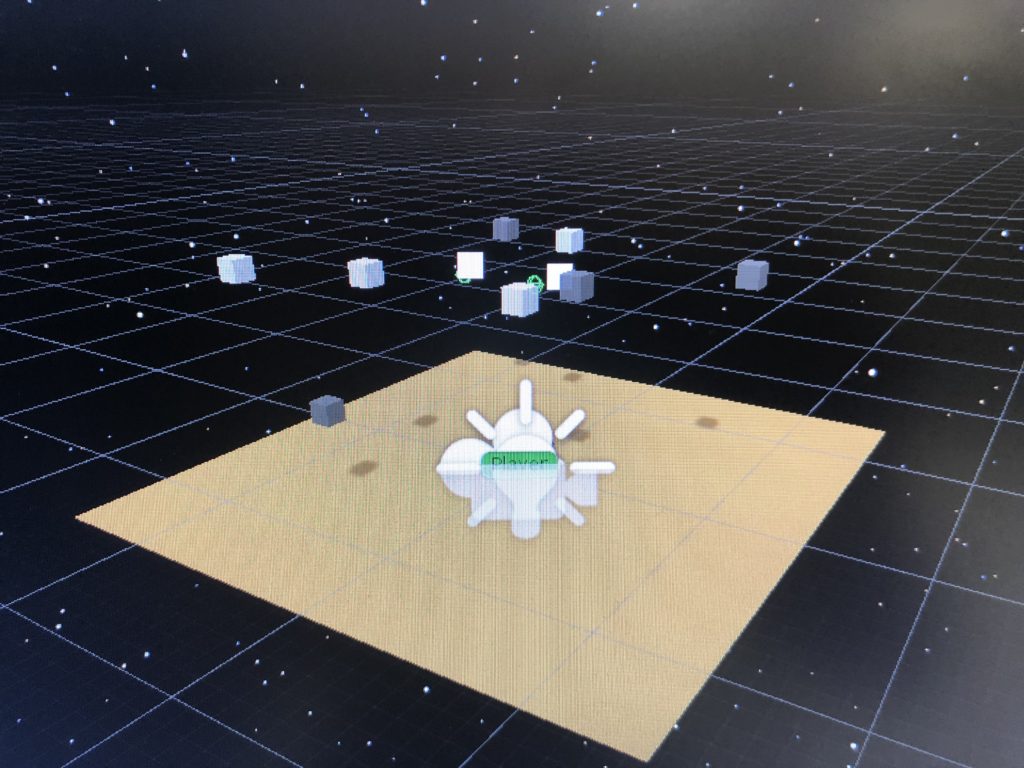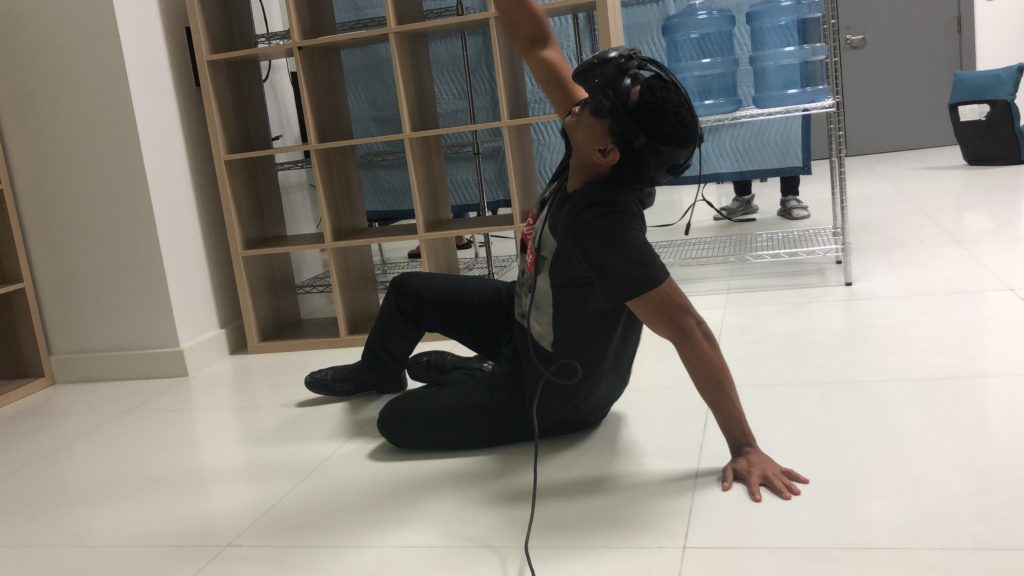Shenuka and I decided to name our project Galaxyze. We thought it was a fitting title considering how our vr environment features stars, the universe, and connecting with the world “out and above.” We also thought using “-yze” made it look like an action verb, which suggests that the players have to do something in the game – to draw and create constellations, patterns, and trails in the sky with little rocks on the ground.
We started out by creating a small plane for the ground and adding a star-filled sky for the skybox, as well as adding little cubes that we’ll later transform into rocks and stars:

We also worked on a prototype of the first interaction between the player and the world. We imagined the player to be able to pick up rocks on the ground and then be able to see a corresponding star copying and reflecting its movement. We achieved this by essentially creating two cubes – one on the ground and one elevated in the sky, and sending the y position of the cube below to the one above. You can see Junior playing with our prototype in the video below:
I was also delighted to find that the players who tested out our protytpe began sitting down to observe the object in the sky better (see pictures below), as this looks more like the experience we were going for – sitting on an island and looking up into the sky to watch the impact one was having and creating. It was great to see people do this because we didn’t instruct them to do this in advance – the environment and interaction had apparently made it intuitive and natural for them to play it in this way.


After presenting this to the class, we received some feedback that we’ll be working on next:
- how to signal players to look up at the stars? – sound? visuals? shadow on the ground?
- create more rocks and stars
- more environment visuals
- how to make interaction more interesting – more than just the star copying the rock’s movement – creating trails?